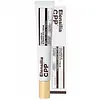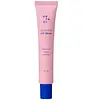What's inside
What's inside
 Key Ingredients
Key Ingredients

 Benefits
Benefits

 Concerns
Concerns

 Ingredients Side-by-side
Ingredients Side-by-side

Collagen Extract
Skin ConditioningGlycerin
HumectantWater
Skin ConditioningNiacinamide
SmoothingDimethicone
EmollientHydrogenated Polydecene
EmollientButylene Glycol
HumectantTriethylhexanoin
MaskingCetearyl Alcohol
EmollientSodium Acrylate/Sodium Acryloyldimethyl Taurate Copolymer
Emulsion StabilisingPolyglyceryl-3 Methylglucose Distearate
EmulsifyingCyclopentasiloxane
EmollientButyrospermum Parkii Butter
Skin ConditioningDimethicone/Vinyl Dimethicone Crosspolymer
Skin ConditioningIsohexadecane
EmollientGlyceryl Caprylate
EmollientSodium Polyacrylate
AbsorbentAmmonium Acryloyldimethyltaurate/Vp Copolymer
Polysorbate 80
EmulsifyingChlorphenesin
AntimicrobialHydrogenated Lecithin
EmulsifyingGlycosaminoglycans
EmollientSteareth-20
CleansingAdenosine
Skin ConditioningSorbitan Oleate
EmulsifyingAllantoin
Skin ConditioningHippophae Rhamnoides Oil
EmollientDisodium EDTA
Theobroma Cacao Extract
Skin ConditioningDextrin
AbsorbentT-Butyl Alcohol
PerfumingN-Hydroxysuccinimide
Skin ConditioningPalmitoyl Tripeptide-5
Skin ConditioningGold
Cosmetic Colorant1,2-Hexanediol
Skin ConditioningGlycine
BufferingChrysin
Skin ConditioningPalmitoyl Tripeptide-1
Skin ConditioningSerine
MaskingGlutamic Acid
HumectantPalmitoyl Tetrapeptide-7
Skin ConditioningBeta-Glucan
Skin ConditioningAspartic Acid
MaskingLeucine
Skin ConditioningAlanine
MaskingLysine
Skin ConditioningArginine
MaskingTyrosine
MaskingPhenylalanine
MaskingThreonine
Proline
Skin ConditioningValine
MaskingIsoleucine
Skin ConditioningHistidine
HumectantMethionine
Skin ConditioningCysteine
AntioxidantCollagen Extract, Glycerin, Water, Niacinamide, Dimethicone, Hydrogenated Polydecene, Butylene Glycol, Triethylhexanoin, Cetearyl Alcohol, Sodium Acrylate/Sodium Acryloyldimethyl Taurate Copolymer, Polyglyceryl-3 Methylglucose Distearate, Cyclopentasiloxane, Butyrospermum Parkii Butter, Dimethicone/Vinyl Dimethicone Crosspolymer, Isohexadecane, Glyceryl Caprylate, Sodium Polyacrylate, Ammonium Acryloyldimethyltaurate/Vp Copolymer, Polysorbate 80, Chlorphenesin, Hydrogenated Lecithin, Glycosaminoglycans, Steareth-20, Adenosine, Sorbitan Oleate, Allantoin, Hippophae Rhamnoides Oil, Disodium EDTA, Theobroma Cacao Extract, Dextrin, T-Butyl Alcohol, N-Hydroxysuccinimide, Palmitoyl Tripeptide-5, Gold, 1,2-Hexanediol, Glycine, Chrysin, Palmitoyl Tripeptide-1, Serine, Glutamic Acid, Palmitoyl Tetrapeptide-7, Beta-Glucan, Aspartic Acid, Leucine, Alanine, Lysine, Arginine, Tyrosine, Phenylalanine, Threonine, Proline, Valine, Isoleucine, Histidine, Methionine, Cysteine
Water
Skin ConditioningButylene Glycol
HumectantButylene Glycol Dicaprylate/Dicaprate
EmollientGlycerin
HumectantHydrogenated Polydecene
EmollientAlgae Extract
EmollientGlyceryl Acrylate/Acrylic Acid Copolymer
HumectantSqualane
EmollientSimmondsia Chinensis Seed Oil
EmollientPolysorbate 60
EmulsifyingBetaine
HumectantGardenia Florida Fruit Extract
Skin ConditioningCetearyl Alcohol
EmollientPrunus Armeniaca Kernel Oil
MaskingLecithin
EmollientSorbitan Olivate
EmulsifyingGlyceryl Stearate
EmollientPEG-100 Stearate
Collagen Extract
Skin ConditioningCaprylic/Capric Triglyceride
MaskingOctyldodecyl Myristate
EmollientCera Alba
Emollient1,2-Hexanediol
Skin ConditioningDimethicone/Vinyl Dimethicone Crosspolymer
Skin ConditioningCarbomer
Emulsion StabilisingTocopheryl Acetate
AntioxidantUbiquinone
AntioxidantSodium Hyaluronate
HumectantAdenosine
Skin ConditioningSodium Ascorbyl Phosphate
AntioxidantSh-Polypeptide-11
Sh-Oligopeptide-1
Skin ConditioningSh-Oligopeptide-9
HumectantMorus Alba Bark Extract
Skin ConditioningGlycyrrhiza Glabra Root Extract
BleachingUlmus Davidiana Root Extract
Skin ConditioningCoix Lacryma-Jobi Ma-Yuen Seed Extract
Skin ConditioningPropolis Extract
Skin ConditioningPrunus Armeniaca Fruit Extract
Skin ConditioningSodium Hydroxide
BufferingParfum
MaskingWater, Butylene Glycol, Butylene Glycol Dicaprylate/Dicaprate, Glycerin, Hydrogenated Polydecene, Algae Extract, Glyceryl Acrylate/Acrylic Acid Copolymer, Squalane, Simmondsia Chinensis Seed Oil, Polysorbate 60, Betaine, Gardenia Florida Fruit Extract, Cetearyl Alcohol, Prunus Armeniaca Kernel Oil, Lecithin, Sorbitan Olivate, Glyceryl Stearate, PEG-100 Stearate, Collagen Extract, Caprylic/Capric Triglyceride, Octyldodecyl Myristate, Cera Alba, 1,2-Hexanediol, Dimethicone/Vinyl Dimethicone Crosspolymer, Carbomer, Tocopheryl Acetate, Ubiquinone, Sodium Hyaluronate, Adenosine, Sodium Ascorbyl Phosphate, Sh-Polypeptide-11, Sh-Oligopeptide-1, Sh-Oligopeptide-9, Morus Alba Bark Extract, Glycyrrhiza Glabra Root Extract, Ulmus Davidiana Root Extract, Coix Lacryma-Jobi Ma-Yuen Seed Extract, Propolis Extract, Prunus Armeniaca Fruit Extract, Sodium Hydroxide, Parfum
Ingredients Explained
These ingredients are found in both products.
Ingredients higher up in an ingredient list are typically present in a larger amount.
1,2-Hexanediol is a synthetic liquid and another multi-functional powerhouse.
It is a:
- Humectant, drawing moisture into the skin
- Emollient, helping to soften skin
- Solvent, dispersing and stabilizing formulas
- Preservative booster, enhancing the antimicrobial activity of other preservatives
Adenosine is in every living organism. It is one of four components in nucleic acids that helps store our DNA.
Adenosine has many benefits when used. These benefits include hydrating the skin, smoothing skin, and reducing wrinkles. Once applied, adenosine increases collagen production. It also helps with improving firmness and tissue repair.
Studies have found adenosine may also help with wound healing.
In skincare products, Adenosine is usually derived from yeast.
Learn more about AdenosineButylene Glycol (or BG) is used within cosmetic products for a few different reasons:
Overall, Butylene Glycol is a safe and well-rounded ingredient that works well with other ingredients.
Though this ingredient works well with most skin types, some people with sensitive skin may experience a reaction such as allergic rashes, closed comedones, or itchiness.
Learn more about Butylene GlycolCetearyl alcohol is a mixture of two fatty alcohols: cetyl alcohol and stearyl alcohol. It is mainly used as an emulsifier. Emulsifiers help prevent the separation of oils and products. Due to its composition, it can also be used to thicken a product or help create foam.
Cetearyl alcohol is an emollient. Emollients help soothe and hydrate the skin by trapping moisture.
Studies show Cetearyl alcohol is non-toxic and non-irritating. The FDA allows products labeled "alcohol-free" to have fatty alcohols.
This ingredient is usually derived from plant oils such as palm, vegetable, or coconut oils. There is debate on whether this ingredient will cause acne.
Due to the fatty acid base, this ingredient may not be Malassezia folliculitis safe.
Learn more about Cetearyl AlcoholCollagen extract is derived from parts of animals. It has skin conditioning properties and is mostly comprised of glycine, proline, and hydroxypoline. These are amino acids.
While our skin does have collagen, this ingredient is not used by the skin for anti-aging. Applying collagen topically has not been linked to helping with collagen loss in skin. All the benefits of collagen are related to hydration.
This ingredient will not increase sun sensitivity, but you should always wear sunscreen during the day.
Learn more about Collagen ExtractThis ingredient is a silicone used to improve the texture of products and absorb oil. It does not get absorbed into the skin.
Like other silicones, Dimethicone/Vinyl Dimethicone Crosspolymer helps condition the skin by creating a barrier. In this sense, it can act as an emollient and trap moisture in.
This ingredient is a type of elastomer.
Learn more about Dimethicone/Vinyl Dimethicone CrosspolymerGlycerin is already naturally found in your skin. It helps moisturize and protect your skin.
A study from 2016 found glycerin to be more effective as a humectant than AHAs and hyaluronic acid.
As a humectant, it helps the skin stay hydrated by pulling moisture to your skin. The low molecular weight of glycerin allows it to pull moisture into the deeper layers of your skin.
Hydrated skin improves your skin barrier; Your skin barrier helps protect against irritants and bacteria.
Glycerin has also been found to have antimicrobial and antiviral properties. Due to these properties, glycerin is often used in wound and burn treatments.
In cosmetics, glycerin is usually derived from plants such as soybean or palm. However, it can also be sourced from animals, such as tallow or animal fat.
This ingredient is organic, colorless, odorless, and non-toxic.
Glycerin is the name for this ingredient in American English. British English uses Glycerol/Glycerine.
Learn more about GlycerinHydrogenated Polydecene is an emollient. It creates a non-occlusive film on the skin that offers extra protection for your skin barrier.
The texture of Hydrogenated Polydecene ranges from light and silky to rich.
Hydrogenated Polydecene is the end compound of controlled hydrogenation of Polydecene.
Learn more about Hydrogenated PolydeceneWater. It's the most common cosmetic ingredient of all. You'll usually see it at the top of ingredient lists, meaning that it makes up the largest part of the product.
So why is it so popular? Water most often acts as a solvent - this means that it helps dissolve other ingredients into the formulation.
You'll also recognize water as that liquid we all need to stay alive. If you see this, drink a glass of water. Stay hydrated!
Learn more about Water